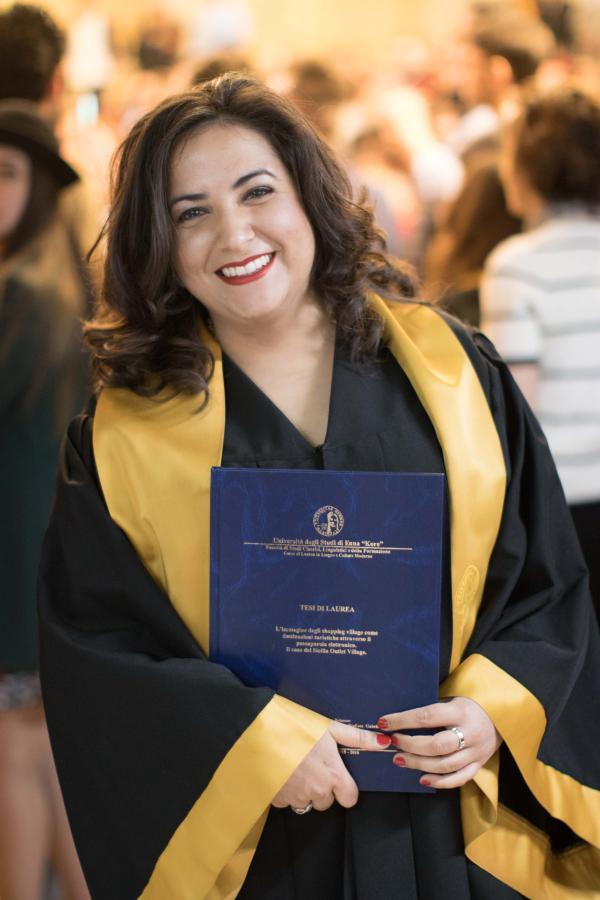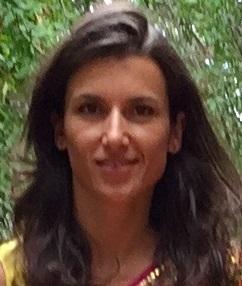A Mezzogiorno innovative investment fund helps the economy and the people of southern Italy

Francesca Millauro
Entering the hall, I smell coconut and orange. Cristiano Cau has just baked a three-layer coconut cake and marmalade stuffed doughnuts. “I took up cooking classes at the Centro because I want to become a chef,” he says. The Centro ANFFAS in Selargius, a small village near Cagliari, is a place where people with special needs can develop special talents. Cagliari-based ANFFAS, the national association of the families with people with disabilities, received a EUR 1.4 million interest-free loan from a fund managed by the European Investment Bank under the Joint European Support for Sustainable Investment in City Areas (JESSICA) initiative in Sardinia.
On the hills of central Sicily, Kore University ranks first in Italy for student satisfaction. Francesca Millauro, a 26 year-old student, tells me “I have seen the new labs and library grow in these years, the campus precinct is vibrant.” The university’s cutting-edge facilities, backed by a EUR 12.4 million loan under the same initiative in Sicily, include a full motion flight simulator for the aerospace engineering course, a first in Europe.
The Mezzogiorno has historically struggled to get financing and has long remained largely ignored by investors. Now an innovative fund of funds that is a partnership between the Italian Ministry for Education, University and Research (MIUR) and the EIB is making financing easier for Mezzogiorno projects in research and innovation.

Cristiano Cau
Little things make the difference in Sardinia
Cristiano attended a catering college and gained a qualification to work in a café. But he needed ongoing support for his health, because of his disability. He struggled to find an occupation and was stuck at home for several long years.
Last summer, at the age of 30, Cristiano discovered the Centro ANFFAS in Selargius. “Here I can cook, which is my passion, but also meet new friends and learn how to make a vase,” he says.
Inaugurated in December 2016, the Centro ANFFAS feels like home for its 40 guests—and it actually is home for 15 of them who live there permanently.
On the first floor, the Centro is organised in three big apartments, equipped with bedrooms, bathrooms and kitchens. The ground floor hosts the daily activities, including gym, music and ceramic classes. “We sell our hand-made pottery in a local shop,” says Centro President Angela Pitzalis, because “it is important to get these people active in the community.”
A determined woman
Angela tells me that the Centro was built from scratch, but the cost of its construction would have been unaffordable without the loan provided by the fund established by the EIB on behalf of the Region of Sardinia. It so easily could have failed to happen.
When she heard about the lending opportunity, Angela worried that her project may not have fully qualified with the technical requirements of the loan. However, Sardinian women are known to be determined, and she did not give up. She made the application anyway.
Luckily, the investment committee that governs the Sardinian fund saw the great potential of the project, “because people’s lives are never a bad investment.” The result was a rather unusual loan that was made possible thanks to a new way of using EU Structural Funds.
How the finance works
Most of EU Structural Funds are used in the form of grants. However, an EIB team supports the regional and national authorities to use them as financial instruments, providing equity, debt or guarantees to investment projects.
“Financial instruments are an innovative way of using EU funds, especially in times of budgetary constraints,” says Andrea Bua, Head of the EIB team. He explains that the projects financed must be economically viable and allow for the loans to be paid back. The Regions can then re-use these returning funds for new initiatives. The EIB leverages these public funds with co-financing of the private sector, and therefore unlocks additional resources in pursuing EU policy objectives and goals.
The principle is simple: the authorities provide part of their EU budget to the EIB, which manages it as a financial instrument, for instance, in the form of a fund of funds. The EIB then carefully selects financial intermediaries on the ground, which identify eligible projects and also co-invest into them.
In Italy, this structure has allowed to successfully finance 75 urban development and energy efficiency projects in the Mezzogiorno - from Capo d’Orlando to Naples - mobilizing a total of EUR 775 million euros. So far, for every euro invested by the Bank on behalf of the local authorities, three were deployed on the ground.
Research and innovation in the heart of an island
I knew the small town of Enna for its handsome medieval centre and its mesmerizing views. I was not aware of its outstanding Kore University, offering 18 academic courses and state-of-the-art facilities for its 10 000 students. Founded in 2005, 200 years after the previous one in Sicily, it has undergone a couple of massive interventions in the past years:
- extension of the central library, now 9 000 square metres, which is three times the previous one, and renovation of the study rooms and the administrative offices
- upgrade of the Kore research platform, 2700 squares metres over three floors, including six tech laboratories.
Salvatore Berrittella, the university’s director, has managed the big project. “Our motivation was high, team work was solid,” he says, “and the favorable conditions of the loan made the difference.”
An unconventional loan
In this case, the Bank has expanded its usual urban development business through the JESSICA programme to embrace research and innovation in a remote area that lagged behind “We created a more business-friendly environment. Success stories such as Kore show that this alternative approach works” says Christoph Lassenberger, an investment officer in Bua’s team. His colleague Andrea Dondè adds: “We are determined to invest in more research and development projects.” The team already embarked on a new challenge to further relaunch innovation in southern Italy and foster economic growth.
More to come for Mezzogiorno
The Bank’s partnership with MIUR is now a EUR 270 million fund of funds for research and innovation in the Mezzogiorno.
The first two financial intermediaries have been selected as conduits for the investments coming out of the EIB Fund of Funds. “We now expect the first investments to be made immediately after the summer”, say Angela Murgia and Alessandro Apa, who manage this fund of funds from the EIB offices in Rome and Luxembourg.
I cannot wait to tell the stories of the people and projects the fund of funds will back.
